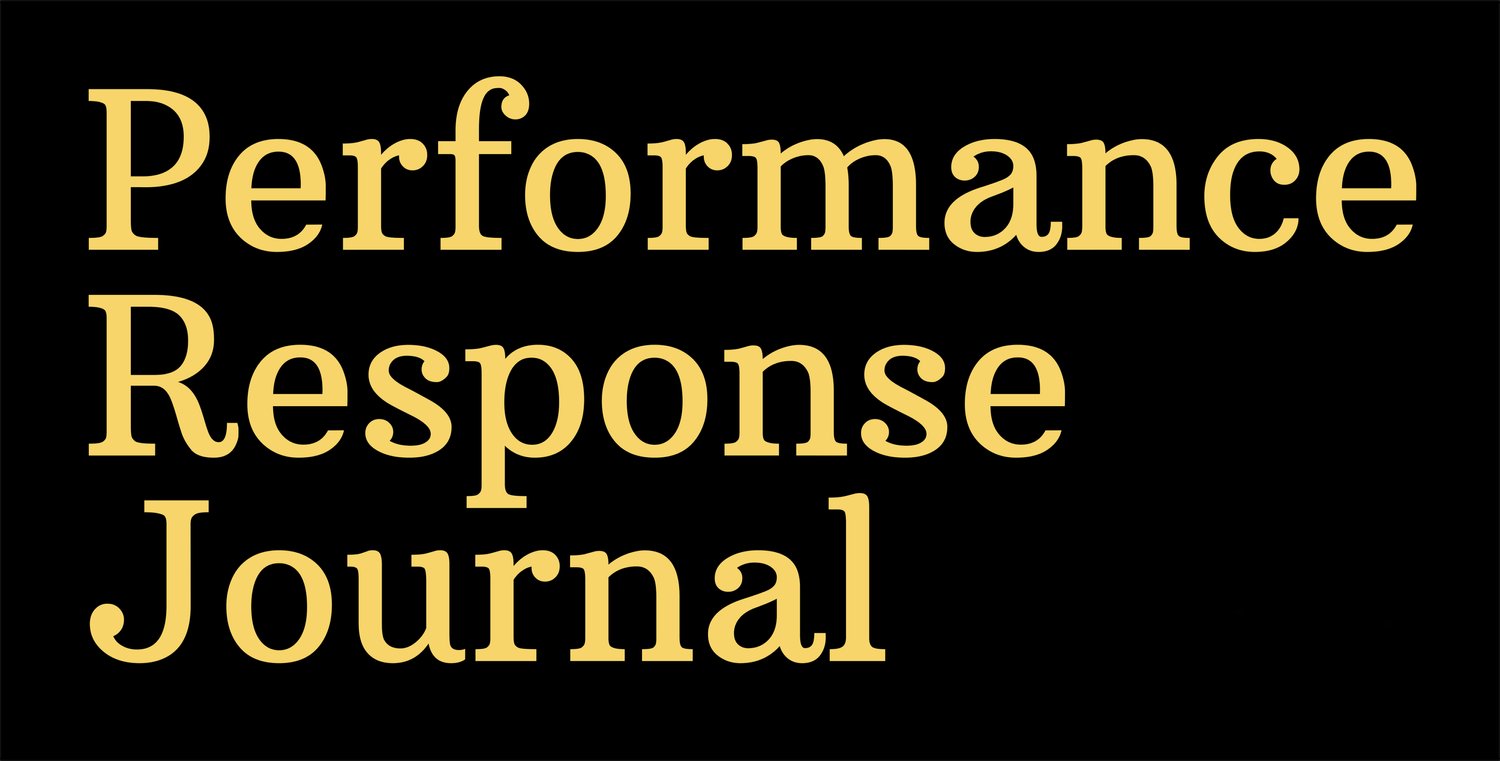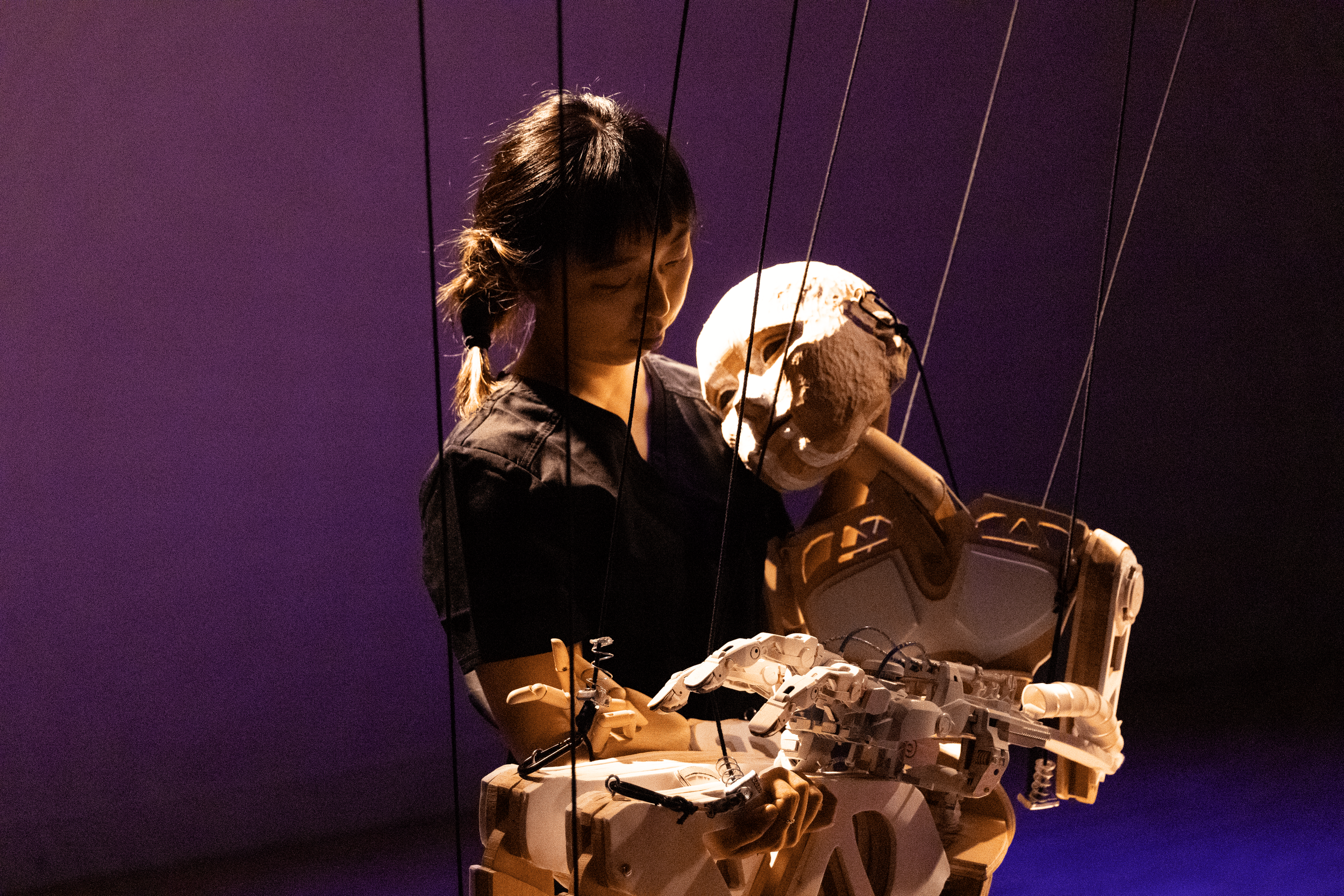Dogs or Cats; Augmented Body: a response by Irene Hsiao
Image captured by Kerberus Production
Dogs or Cats; Augmented Body by Jaerin Son, in collaboration with Kelly Nesheim & Kevin Michael Wesson
Presented as part of Steppenwolf’s LookOut Series
January 26-28, 2023
Steppenwolf’s 1700 Theater
**********************
Jaerin Son’s Dogs or Cats; Augmented Body begins at the door, where one receives a boarding pass in the form of a survey: human, animal, cyborg, AI, robot, other—what are you (“check all that apply”)? Down the aisle, an agent verifies your response with a metal device and a human touch. (In my case: no pulse, no answer. Unclassifiable?)
Vegetable isn’t a response on the survey, though it’s with an apple that the Human (Son) begins her examination of life and living, which begins with a clinical insertion of an electrode into the flesh of the fruit and rapidly evolves into something more uncanny, as the caress of her fingers on the skin of the apple moistened with drops of water from a fishbowl produce a high-pitched interference, or maybe music, under the recitation of familiar biblical text on the creation of the heavens and the earth, the water and the sky, the land, the sea, the plants and the animals—and it was good. Or at least, it was so, we see dimly through a webcam projected on a screen behind the action, as the ocean teems with tiny humans crammed in an inflatable raft.
Juxtaposed with this cerebral vision, Human and two puppeteers (Kelly Nesheim and Kevin Michael Wesson) pull three blond dolls from a vagina the size of a pizza.
From above descends an androgynous body with delicately articulated joints to lie upon a table (“At a Physical Therapy Clinic, an injured A.I. Refugee just got accepted” reads the supertitle). The physical therapists (Son, Nesheim, and Wesson) probe the Bot, which registers sounds of sickness and health like a game of Operation—and then, suddenly, the structure transforms from bot to body with an inhalation: it’s alive.
“Am I your assistant? Or am I in the middle of a war? Do we treat each other in a hostile manner?” Bot asks (voiced by Nesheim and puppeteered by Nesheim and Wesson).
Image captured by Kerberus Production
The dialogue that unfolds between Human and Bot is beautifully disorienting as it reveals the arbitrary nature of customs in a world still run by humans and the unconstrained possibility of imagined alternatives. Bot is in need of approved American status in order to receive repairs—a process analogous to Human’s experience of immigration. Together they explore the contradictions of credit, of substantiating romance in the eyes of the law, the difference between learning and knowledge, and the artifices and realities of identities and relationships. Throughout, Human speaks Korean, Bot speaks English, and they understand each other perfectly. Or rather, as imperfectly as humans do (“making mistakes is the most definitive trait of [humans,]” notes Bot).
When Bot departs, one arm remains with Human. She puts it on, and it transforms her, illustrating puppetry’s particular magic in the power of an object to become a body, and also that more mundane miracle of being mortal, evolving with the experience of each other—embodied in the hybridization of human and robot body in the procession of shadow that concludes the work: a menagerie of mixed bodies, a monster parade. Poetry.
************************
Irene Hsiao is a writer and dancer. Her writing has appeared in the Chicago Reader, SF Weekly, Newcity, LA Review of Books, Chicago Sun-Times, KQED Arts, Bay Area Reporter, In Dance, Dance Teacher, and Dance Studio Life, and has received awards from the Chicago Headline Club, the William Carlos Williams Society, and the AAN. She was the inaugural Artist-in-Residence at the Smart Museum of Art, first artist-in-residence at 21c Museum Hotel Chicago, a Fellow at High Concept Labs, and a Chicago Dancemakers Forum Lab Artist. By day she manages communications for the Center for Chronic Disease Research and Policy.



